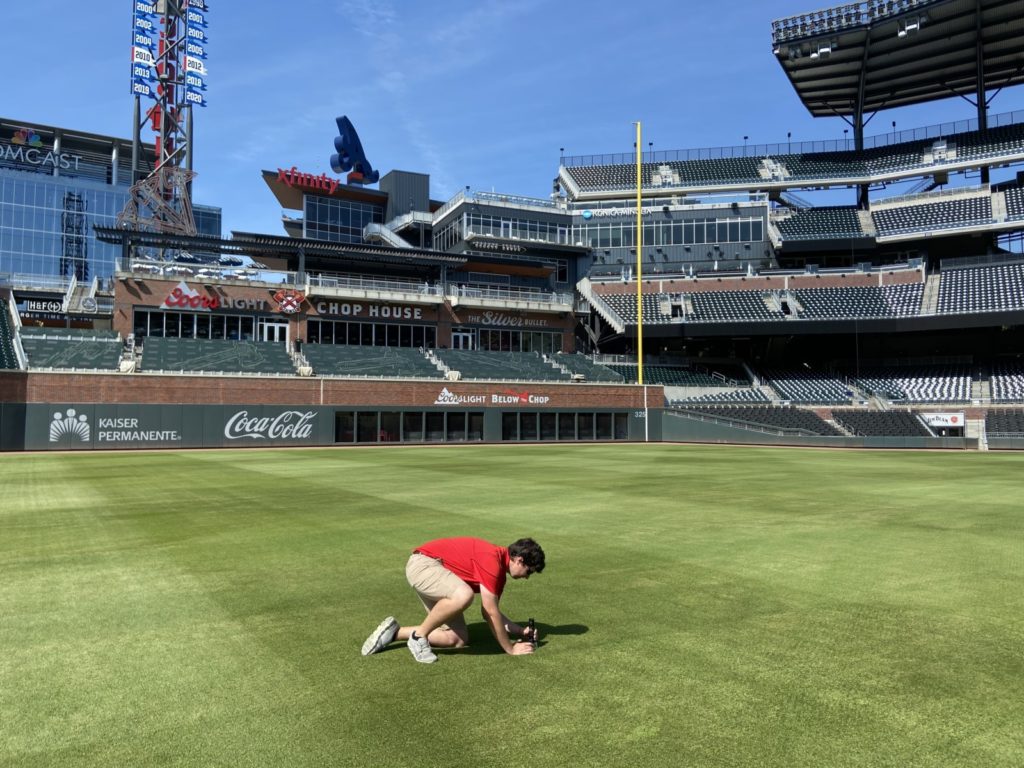
My research program covers several aspects of plant pathology including epidemiology, pathogen population structure, pathogen adaptation to hosts and to climate change, and resistance gene identification in diverse plant-pathogen systems. I am particularly interested in understanding race dynamics and plant-pathogen interactions using genomics and transcriptomic approaches. Specific pathosystems include dollar spot on turfgrass, rust on switchgrass, rusts, and septoria leaf blotch on wheat. Substantial efforts are directed towards developing disease-management strategies for main turfgrass and forages in Georgia. I work closely with several turfgrass and wheat breeders to develop disease-resistant cultivars. My research interests also include deciphering the role of plant-associated microbes to develop novel approaches for disease management. The goal is to provide an ecological basis to improve the sustainability of turfgrass/forage cultivation systems by reducing reliance on chemical control and enhancing environmental and economical stewardship.
~ Dr. Bochra A. Bahri

Dollar spot disease is caused by Clarireedia fungi and is one of the most economically significant diseases of turfgrass worldwide. It diminishes playability on golf courses and athletic fields and depletes the aesthetic value of any infected turf stand. Fungicides are an important part of dollar spot control in many commercial and recreational settings. However, pathogen resistance to fungicides has become prevalent over the past few decades. I am interested in exploring sustainable management strategies for dollar spot that could reduce fungicide reliance. I am currently investigating the effects of UV-c light radiation and (ozonated and oxygenated) nanobubble technologies on dollar spot development. I’m also interested in examining the genetic diversity and population structure of dollar spot pathogens in Georgia. Understanding genetic diversity and population structure in this region will give insight into pathogen biology and epidemiology, which in turn would help turfgrass managers develop more effective disease management programs.
~ Turner Spratling
Gray leaf spot (GLS) caused by Magnaporthe oryzae is commonly observed in various turfgrass species throughout the United States. Some examples include tall fescue, annual and perennial ryegrasses, and St. Augustinegrass. This fungal pathogen, M. oryzae, is also the cause of one of the most deadly diseases on rice, the rice blast disease. Recently, I obtained a 6-month training at the International Rice Research Institute (IRRI), Philippines, on rice blast disease and screened a set of hybrid rice lines for resistance against rice blast. This training helped me gain expertise in blast phenotyping and genotyping techniques and, will now help to transfer some of the technologies and approaches to oat and turfgrasses in Georgia. The primary objective of my research involves studying the molecular genetics of resistance to M. oryzae in oats and tall fescue and understanding its host specificity across the Poaceae family. I will be utilizing conventional and modern plant breeding approaches for molecular mapping and QTL analysis of the GLS-resistant genes. In addition to this, I am also exploring different and novel diseases prevalent on tall fescue in Georgia. With my expertise in bioinformatics and computational biology, I am also studying the structural and functional attributes of the genes of Clarireedia species, the causal agent for dollar spot disease on turfgrasses.
~ Harshita Saxena


I graduated with a B. S in Agriculture Sciences from Tribhuvan University, Nepal, in 2017 and a master’s degree in agricultural sciences from the University of New Hampshire in 2020. My previous work involved marker-assisted breeding and biotechnology. I joined Bahri Lab in the summer of 2023 to aid in the switchgrass research projects. Switchgrass is a perennial C4 grass native to the USA that has potential as a biofuel crop. Under the initiative of the Center for Bioenergy Innovation (CBI), research studies in switchgrass are primarily directed toward increasing biomass. With the cultivation of switchgrass, increases in disease pressures are observed across the USA. These diseases constitute a threat to biomass and seed production. My study focuses on understanding pathogen dynamics and identifying resistant genotypes in switchgrass.
~ Samikshya Rijal
I completed my MS in Crop Science from Washington State University in 2017 where my research focused on in situ root phenotyping to understand the root growth dynamics in greenhouse and field conditions for improving drought tolerance in spring wheat. In, August 2017, I joined Dr. Buck/ Dr. Martinez lab at the University of Georgia Griffin campus, where I completed my Ph.D. on an important fungal disease of wheat, Fusarium head blight (FHB). My Ph.D. project was focused on exploring the genetic diversity and population structure of the Fusarium spp. isolated from wheat and corn responsible for causing FHB in wheat. We also assessed the FHB epidemics across wheat fields of Georgia during 2017-2018 that were associated with weather variables. The other part of my Ph.D. research was focused on identifying the novel sources of FHB resistance in soft red winter wheat using genome-wide association studies. After pursuing my doctoral degree, I joined the Bahri lab in May 2022 as a Postdoctoral Research Associate where my research is focusing on phenotyping and identifying sources of disease resistance in switchgrass and turfgrass using bi-parental QTL mapping and GWAS. Additionally, I am orienting my research on functional analysis of gene expression and studying pathogen population genetics, diversity, and pathogen genomes using next-generation sequencing technologies including RNA-seq and whole-genome sequencing approach to understanding the parasite-pathogen-plant interactions in various turfgrasses and switchgrass.
~ Dr. Bikash Ghimire
